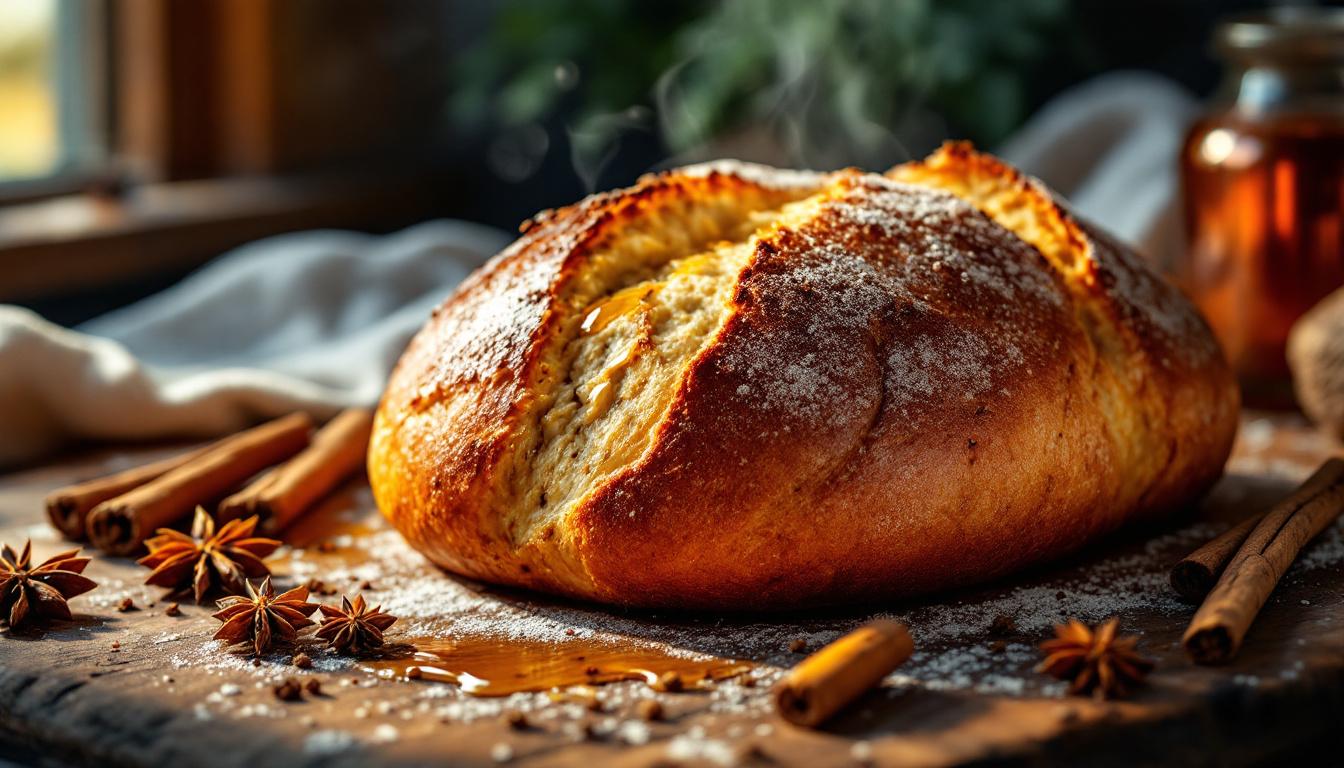I’ll never forget the first time I made authentic Alsatian spice bread. After a week-long culinary tour through eastern France, I returned home determined to recreate that intoxicating aroma that seemed to perfume every bakery in Strasbourg during winter. What makes this pain d’épices special isn’t just its rich history dating back to the 15th century, but the magical transformation it undergoes as it rests—becoming more aromatic and moist with each passing day. Unlike its American gingerbread cousin, this version relies on the natural sweetness of honey with a distinctive anise-forward spice profile that will transport you straight to an Alsatian Christmas market.
The Story Behind Alsatian Pain d’Épices
Traditional Alsatian spice bread represents centuries of culinary wisdom. Originally created as a preservable treat using rye flour and honey—ingredients that naturally extend shelf life—this dense, aromatic loaf was traditionally prepared without butter or eggs. What began as practical sustenance has evolved into a celebrated holiday tradition, with each family closely guarding their specific spice blend. The defining characteristic of authentic Alsatian pain d’épices is its prominent anise flavor, which harmonizes beautifully with honey’s natural complexity. As one Alsatian chef once told me, “Without anise, it’s just a sweet bread—with it, it becomes our tradition.”
Ingredients Spotlight
The soul of pain d’épices lives in its carefully balanced ingredients:
- 220g (1¾ cups) rye flour – provides the characteristic dense texture and earthy foundation
- 220g (1¾ cups) all-purpose flour – balances the density for the perfect crumb
- 300g (¾ cup) honey – seek out a floral or forest honey for authentic depth
- 2 teaspoons baking soda – the traditional leavening agent
- 1 tablespoon ground anise – the signature flavor that cannot be compromised
- 1 teaspoon ground nutmeg – freshly grated offers remarkable aromatic intensity
- 1 teaspoon ground cloves – for warming depth
- ½ teaspoon cinnamon – restrained use keeps it from dominating
- ½ teaspoon ground ginger – provides gentle heat without sharpness
- ¼ teaspoon ground black pepper – the secret ingredient that balances sweetness
- ½ teaspoon ground star anise – intensifies the anise profile (optional)
- 50ml (3½ tablespoons) warm water – to help incorporate the honey
Step-by-Step Guide
The beauty of this recipe lies in its straightforward preparation:
- Preheat your oven to 350°F (180°C) and thoroughly grease two 9×5-inch loaf pans.
- In a large bowl, sift together both flours and baking soda, then whisk in all spices until evenly distributed.
- In a small saucepan, gently warm the honey with water until just fluid—don’t boil or you’ll lose those delicate flavor compounds.
- Create a well in your dry ingredients and gradually pour in the warm honey mixture, folding with a sturdy spatula until you achieve a thick, homogeneous batter. The mixture will be quite dense—this is exactly what you want.
- Divide the batter between prepared pans, smoothing the tops with a dampened spatula.
- Bake for 45 minutes, or until a knife inserted comes out clean. The tops should be deeply golden with a slight crack—similar to the caramelized surface of a French tart.
- Allow to cool in pans for 10 minutes before transferring to a wire rack.
Expert Techniques
What separates an ordinary spice bread from an exceptional one comes down to technique:
Chef’s Note: The patience you exercise after baking is as important as the precision during mixing. A properly rested pain d’épices develops a profound melding of flavors that simply cannot be rushed. I wrap mine in parchment, then a clean kitchen towel, and wait at least three days before the first slice.
For an elevated texture reminiscent of the airy quality found in French beignets, lightly spritz the top of your loaves with water just before baking. This creates a slight steam effect that improves the crust. Also, when measuring honey, warming your measuring cup first allows for clean, accurate portioning.
Presentation & Pairing Ideas
While pain d’épices stands beautifully on its own, there are several ways to elevate this traditional treat:
- Slice thinly and toast briefly for breakfast, spread with cultured butter and sea salt
- Serve alongside a cheese board featuring creamy cheeses like Brillat-Savarin or Munster
- Pair with an Alsatian Gewürztraminer or Riesling, whose aromatic profiles complement the spices
- Create stunning dessert tartlets using thin slices as bases for poached pears and crème fraîche
- Cube and fold into a chocolate mousse for a surprising textural contrast
Remember that pain d’épices evolves over time—slice a piece on day three, another on day seven, and again on day ten to experience its remarkable transformation. The complex spices will continue to bloom, the crumb will become more tender, and you’ll understand why this centuries-old recipe continues to captivate modern palates. Make it your own by experimenting with the spice ratios, perhaps adding a touch of cardamom or orange zest to create your signature version that might just become your own family tradition.
